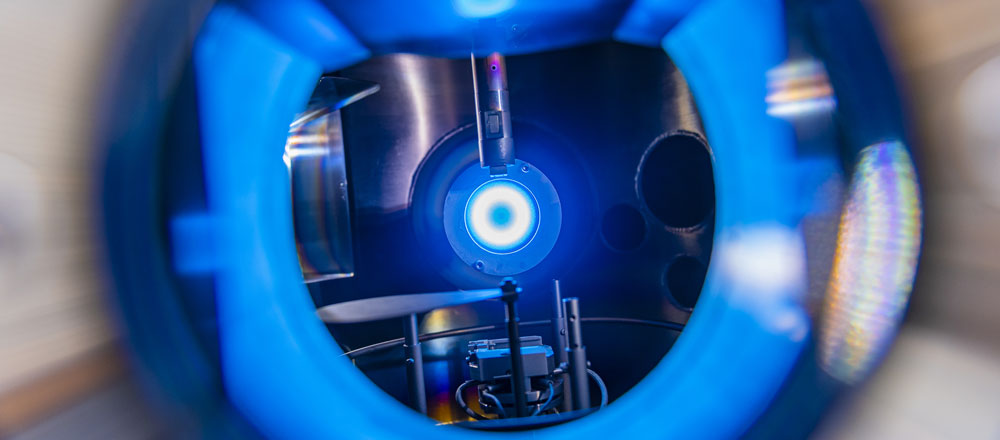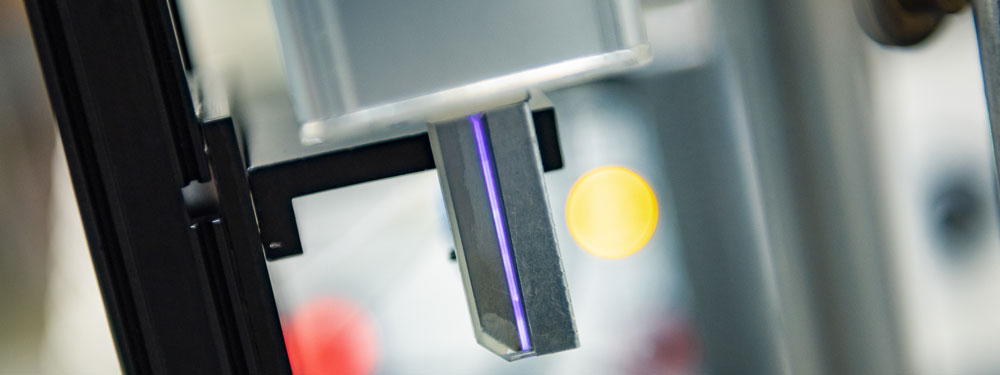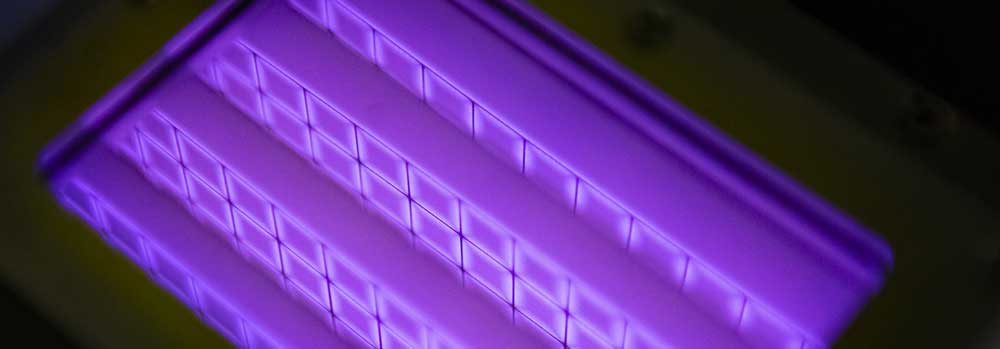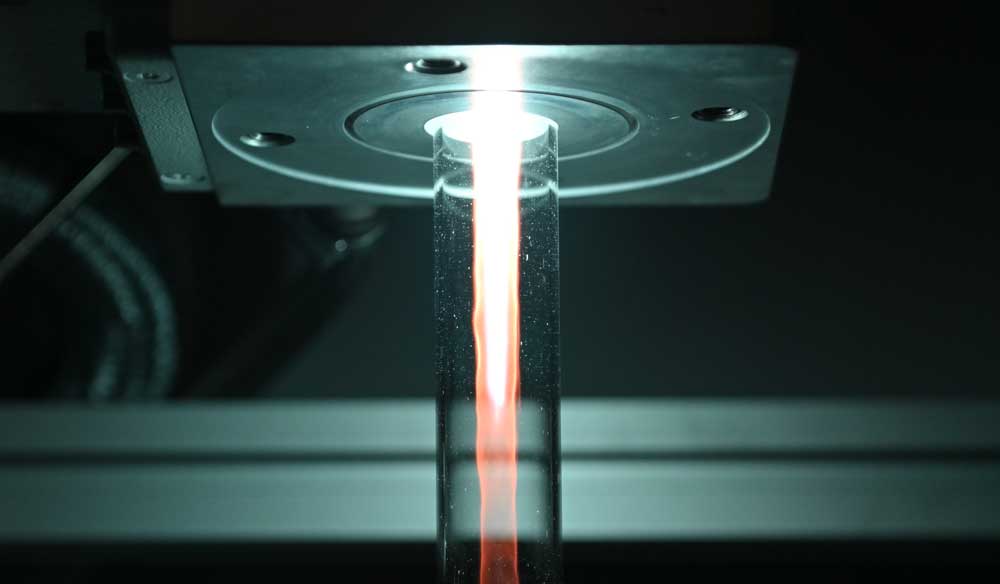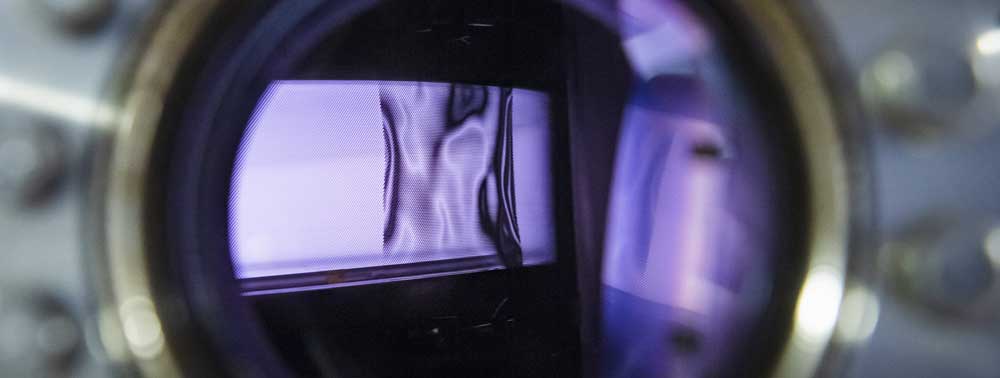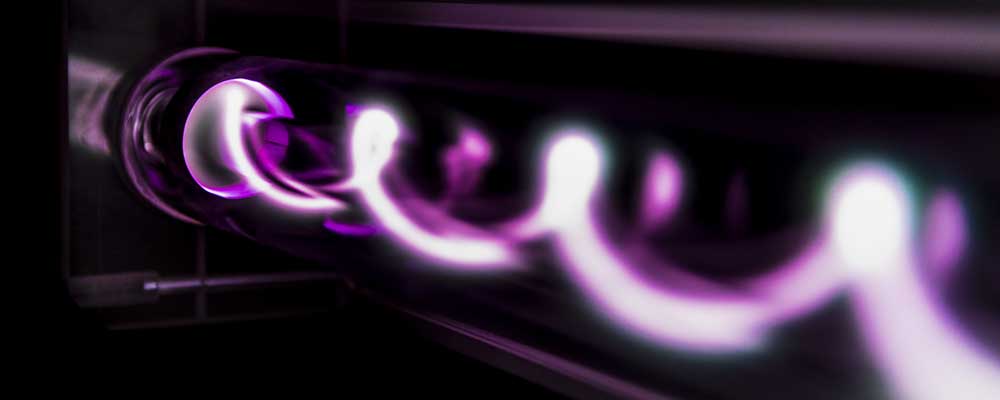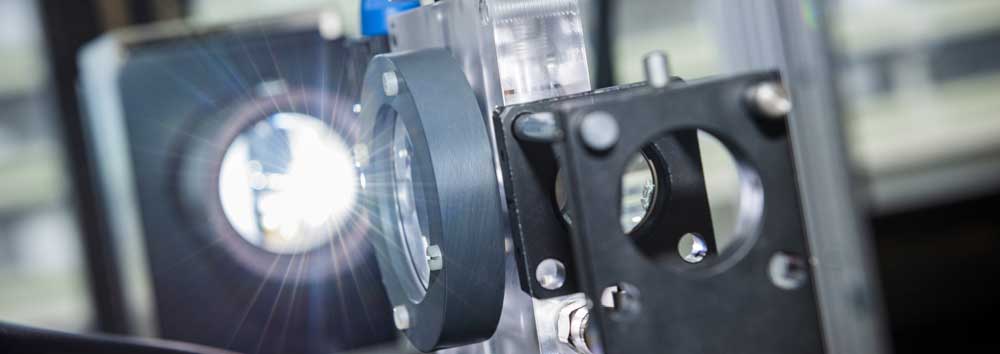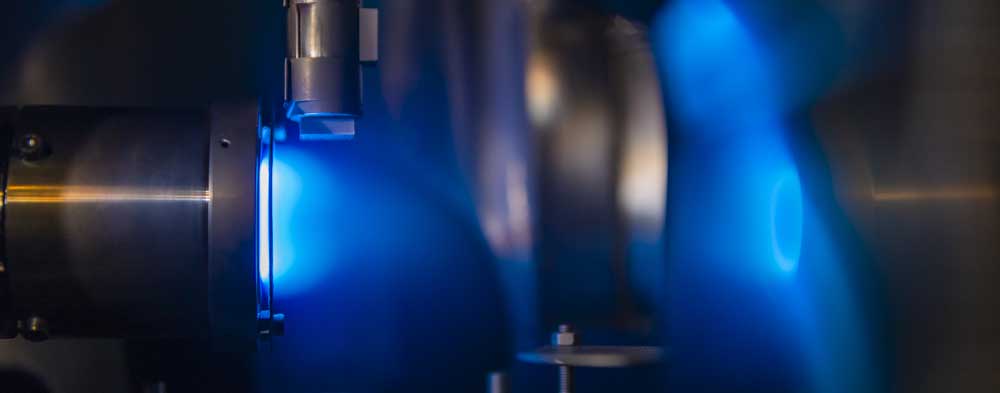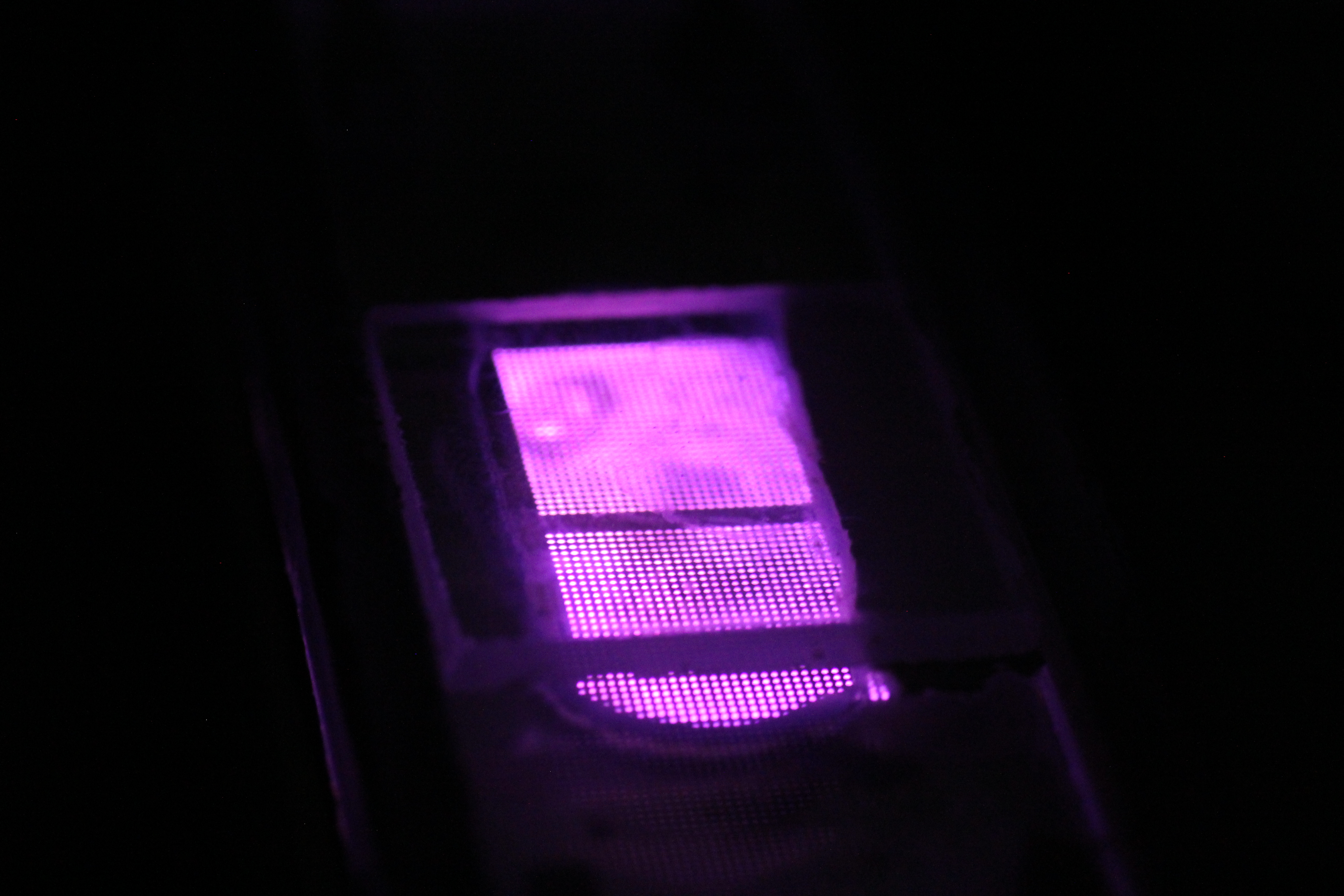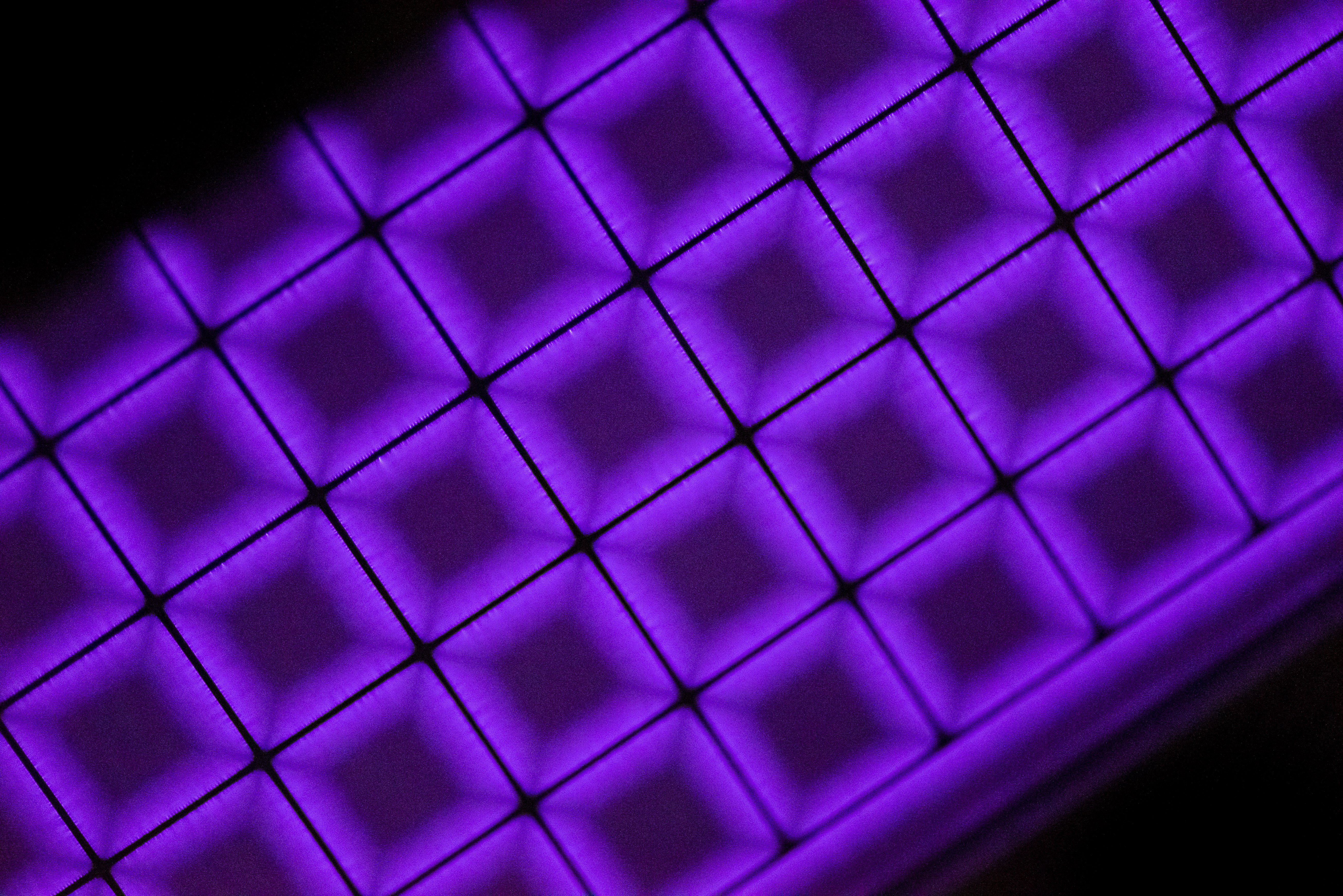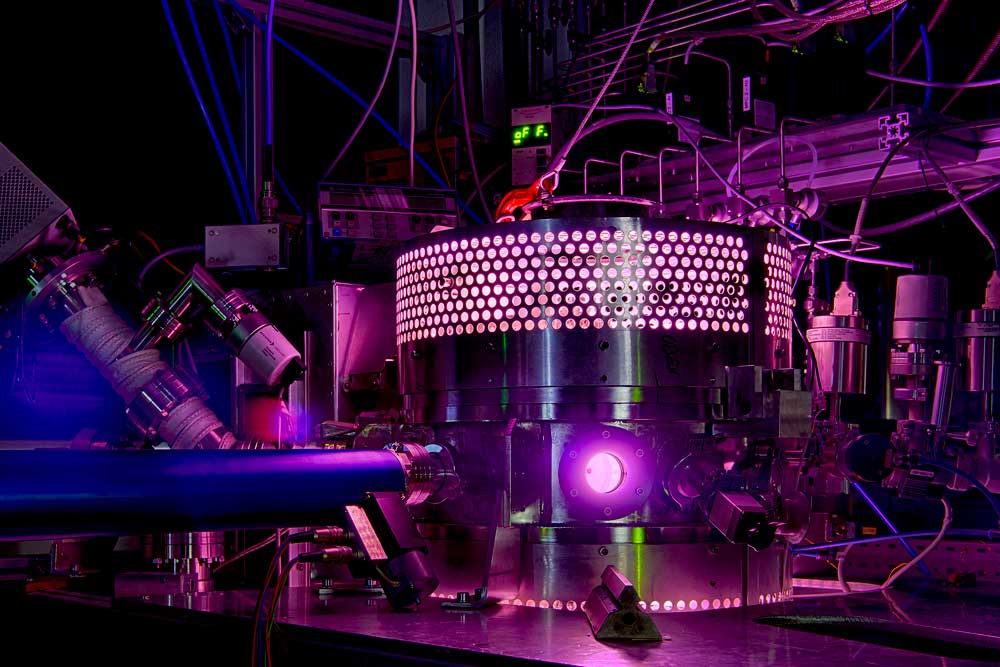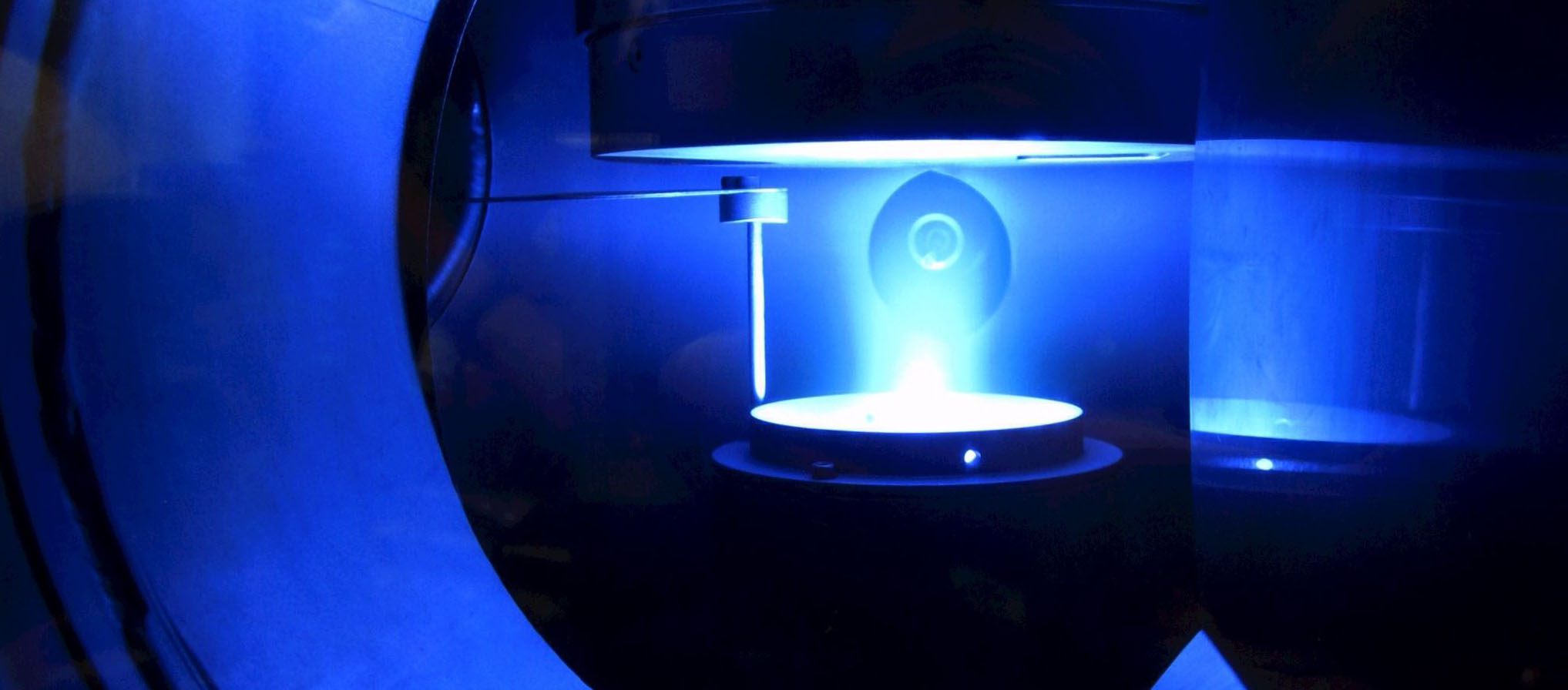- Details
Open house with the mouse
On 3th October, the Faculty of Physics at the Ruhr University Bochum invited children to the Mouse Day. After the physics show, the children experimented in numerous workshops and explored the world of physics. Participants learned about plasmas and their important applications in the plasma workshop, such as coating surfaces. They were able to ignite plasmas, experiment and coat samples using the sputter coater.
- Details
Plasma School
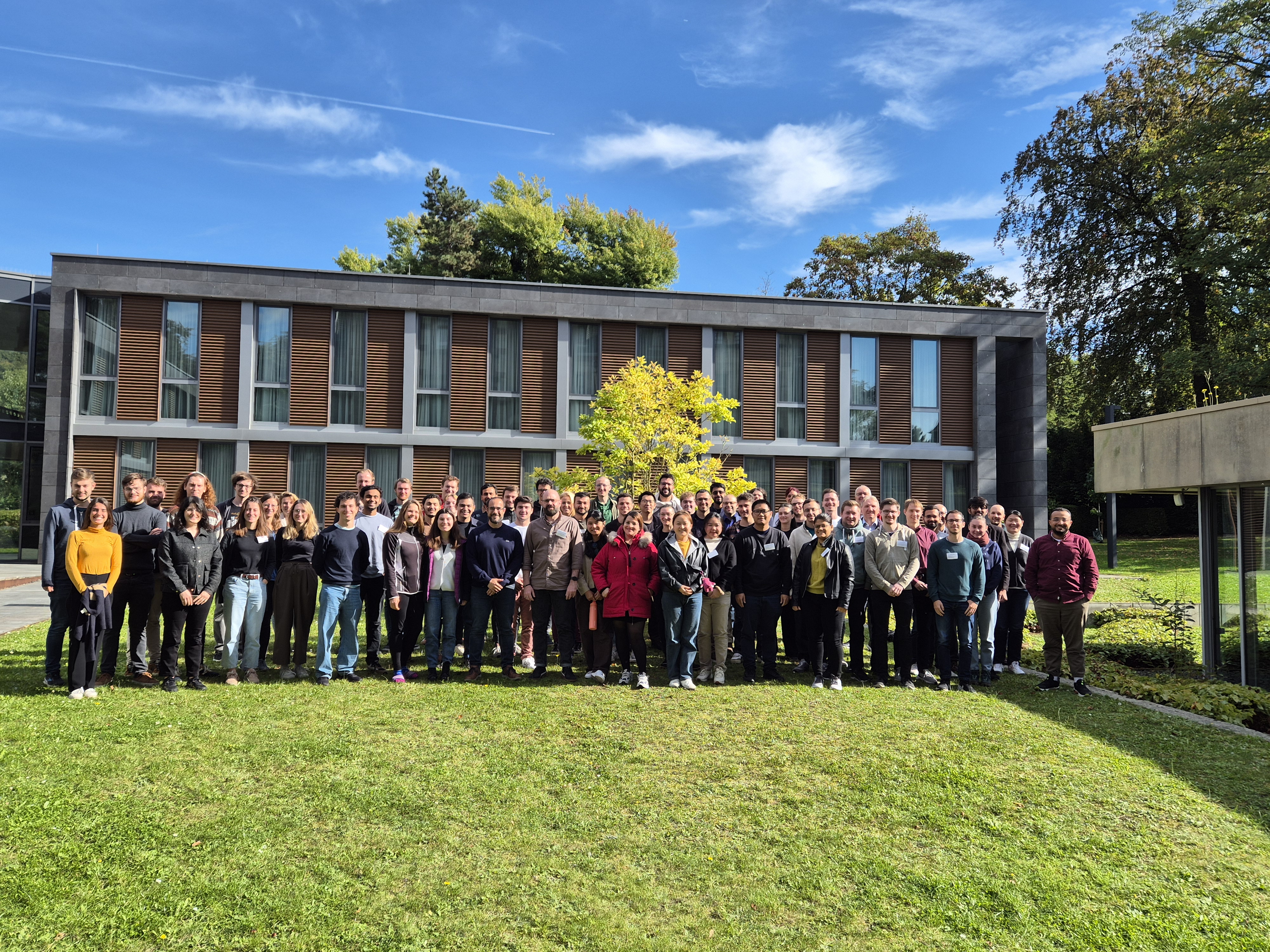 The 27th International Plasma School on "Low Temperature Plasma Physics: Basics and Applications," took place from October 5 to October 10, 2024, in Bad Honnef, Germany. The Master Class titled “Plasmas, Liquids, and Nanomaterials,” was held from October 11th to October 12th, 2024. For more information , please visit our website: www.plasma-school.org.
The 27th International Plasma School on "Low Temperature Plasma Physics: Basics and Applications," took place from October 5 to October 10, 2024, in Bad Honnef, Germany. The Master Class titled “Plasmas, Liquids, and Nanomaterials,” was held from October 11th to October 12th, 2024. For more information , please visit our website: www.plasma-school.org.
- Details
Two PhD Students at Hakone conference
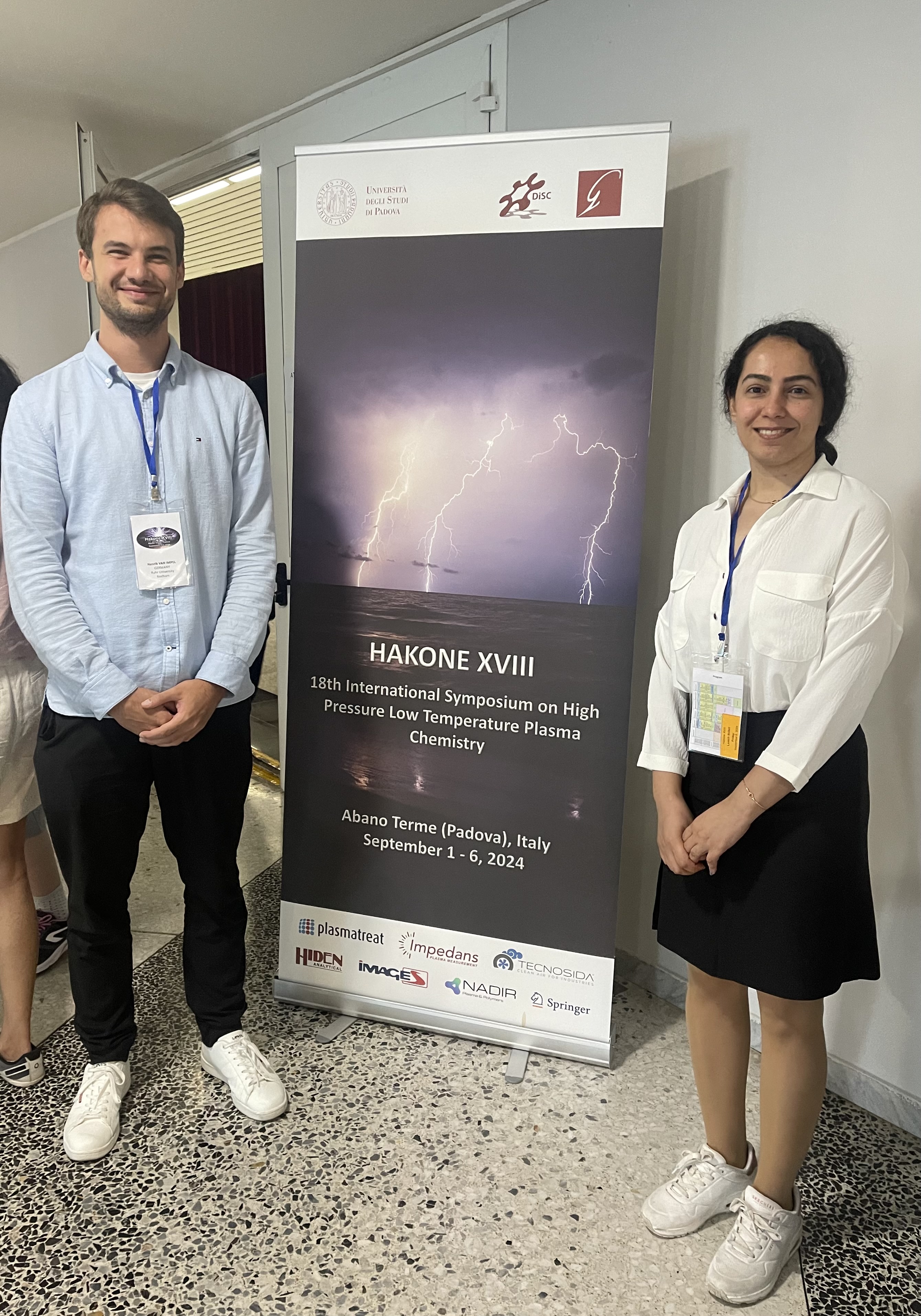 Soad Mohsenimehr and Henrik van Impel (A6) gave presentations on their latest research at the 18th Hakone Conference, which took place in Padua, Italy, from September 1st to 6th, 2024. The event featured numerous insightful presentations dealing with low-temperature plasmas at atmospheric pressure and their applications in plasma chemical processes. One of the highlights of the conference was the active participation of students: 22 of the 56 presentations were given by PhD students, which created a very appealing environment for young researchers. In particular, dielectric barrier discharges were discussed in terms of their efficiency when used with catalysts and the basic physical dynamics of the discharges. Other topics included plasma applications in agriculture and food processing as well as the interaction between plasma and liquid. In addition to the scientific findings, the conference provided an excellent platform for PhD students to network with international participants from 24 countries, promoting collaboration between disciplines.
Soad Mohsenimehr and Henrik van Impel (A6) gave presentations on their latest research at the 18th Hakone Conference, which took place in Padua, Italy, from September 1st to 6th, 2024. The event featured numerous insightful presentations dealing with low-temperature plasmas at atmospheric pressure and their applications in plasma chemical processes. One of the highlights of the conference was the active participation of students: 22 of the 56 presentations were given by PhD students, which created a very appealing environment for young researchers. In particular, dielectric barrier discharges were discussed in terms of their efficiency when used with catalysts and the basic physical dynamics of the discharges. Other topics included plasma applications in agriculture and food processing as well as the interaction between plasma and liquid. In addition to the scientific findings, the conference provided an excellent platform for PhD students to network with international participants from 24 countries, promoting collaboration between disciplines.
- Details
Japanese-German Workshop on Low-Temperature Plasma Application
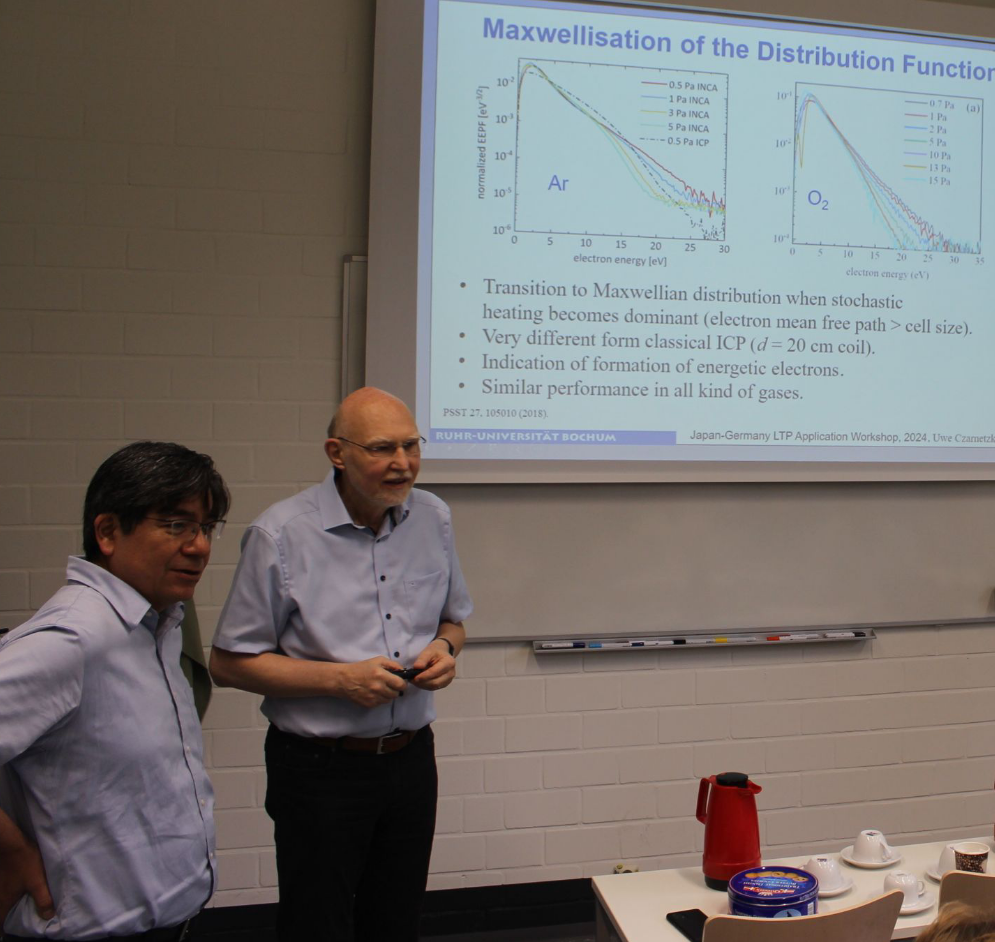 A workshop with guests from Japanese universities/ research institutions and members of the chair of Experimental Physics V was held on 25th and 26th of July. Initiated by Prof. Aramaki from Nihon University, the workshop brought together long time collegues who stayed as collaborators at EP V during the last 20 years. All of them conduct research in the field of low temperature plasmas. This covers a broad range from the application for agriculture or semiconductor fabrication as well as developing new kinds of diagnostics like vortex laser spectroscopy. With these topics a perfect overlap with the research of the CRC is given so that the workshop consists not only of one day of presentations but also one day of laboratory visits allowing for the guests to get an overview of the current local plasma research.
A workshop with guests from Japanese universities/ research institutions and members of the chair of Experimental Physics V was held on 25th and 26th of July. Initiated by Prof. Aramaki from Nihon University, the workshop brought together long time collegues who stayed as collaborators at EP V during the last 20 years. All of them conduct research in the field of low temperature plasmas. This covers a broad range from the application for agriculture or semiconductor fabrication as well as developing new kinds of diagnostics like vortex laser spectroscopy. With these topics a perfect overlap with the research of the CRC is given so that the workshop consists not only of one day of presentations but also one day of laboratory visits allowing for the guests to get an overview of the current local plasma research.
- Details
Five Posters at ESCAMPIG
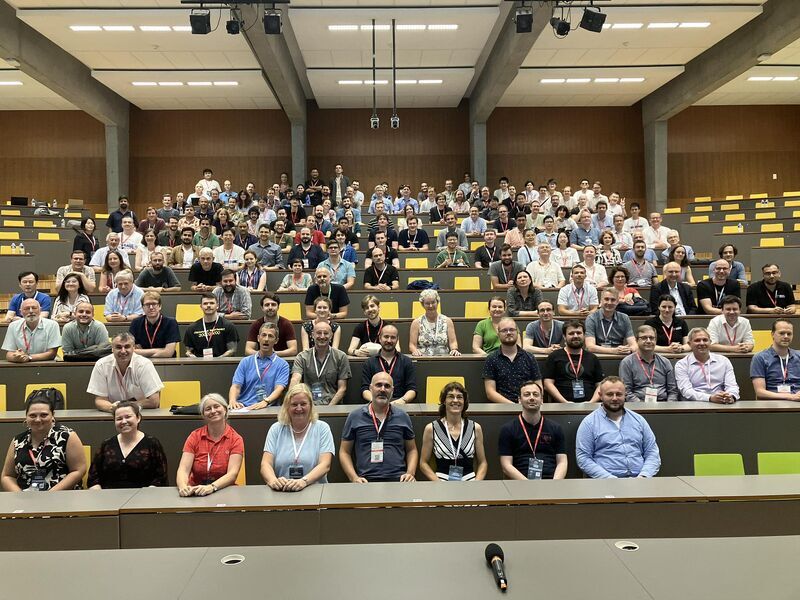 This year's ESCAMPIG conference took place in Brno, Czech Republic. Three members of Experimental Physics II and one member of AEPT from Bochum took part and contributed to the conference with five posters. In addition to the interesting plenary lectures by well-known personalities such as Peter Bruggeman (USA), Luís L. Alves (Portugal), Kinga Kutasi (Hungary) and Holger Kersten (Germany), there was a variety of around 160 other posters on both modelling and experimental topics. In addition to the professional exchange, the conference offered excellent evening events, such as the welcome party with a dance class and Czech specialities or the conference dinner with live music and a cosy atmosphere. We had many interesting discussions at the conference and met new and old acquaintances, which is why we came away from the conference with very positive experiences overall.
This year's ESCAMPIG conference took place in Brno, Czech Republic. Three members of Experimental Physics II and one member of AEPT from Bochum took part and contributed to the conference with five posters. In addition to the interesting plenary lectures by well-known personalities such as Peter Bruggeman (USA), Luís L. Alves (Portugal), Kinga Kutasi (Hungary) and Holger Kersten (Germany), there was a variety of around 160 other posters on both modelling and experimental topics. In addition to the professional exchange, the conference offered excellent evening events, such as the welcome party with a dance class and Czech specialities or the conference dinner with live music and a cosy atmosphere. We had many interesting discussions at the conference and met new and old acquaintances, which is why we came away from the conference with very positive experiences overall.
- Details
The Plasma Truck is on the road again!
 On 20th June, physics students and PhD students in physics and electrical engineering from Ruhr-University Bochum visited the Burggymnasium Essen. The high school students from grades 11 and 12 participate in the mobile workshop. They conducted exciting plasma experiments, used a spectrometer to analyse the light emission and observed how plasmas can be influenced by electrical and magnetic fields. The workshop was a success and the students showed great interest.
On 20th June, physics students and PhD students in physics and electrical engineering from Ruhr-University Bochum visited the Burggymnasium Essen. The high school students from grades 11 and 12 participate in the mobile workshop. They conducted exciting plasma experiments, used a spectrometer to analyse the light emission and observed how plasmas can be influenced by electrical and magnetic fields. The workshop was a success and the students showed great interest.
Although plasma physics is not part of the curriculum, some experiments in school lessons involve plasmas. The mobile workshop was developed to familiarise high school students with the concept of plasma. Experiments were designed that can be transported to school in a minibus. During the 90-minute workshop, the students experiment in small groups and learn about plasmas and their various applications.
- Details
CRC 1316 is part of the annual report 2023 of the German Science Foundation
The research of CRC1316 is highlighted in the German Science Foundation's annual report. Under the title "Electrifying with Plasmas," the various conversion strategies are explained and illustrated based on the CRC's individual projects.
- Details
15th workshop on Frontiers in Low-Temperature Plasma Diagnostics
From 29th April until Thursday 2nd May, members of the Department of Pulsed Plasma Systems from the Institute of Plasma Physics of the Czech Academy of Sciences in Prague, Czech Republic, hosted the 15th Frontiers in Low-Temperature Plasma Diagnostics Workshop (FLTPD XV) in Liblice, Czech Republic. This biannual workshop was attended by a few members of the SFB1316 to connect with other researchers working in low-temperature plasma diagnostics from all over the world. Over the course of four days, nearly 30 lectures were held, discussing recent advancements and results of a variety of diagnostic techniques such as emission spectroscopy, electrical measurements, LIF & TALIF, cavity ringdown spectroscopy, EFISH and many more. Additionally, two poster sessions were held, providing further opportunities for discussions.
- Details
CRC 1316 participated at IWM 12 in Orleans
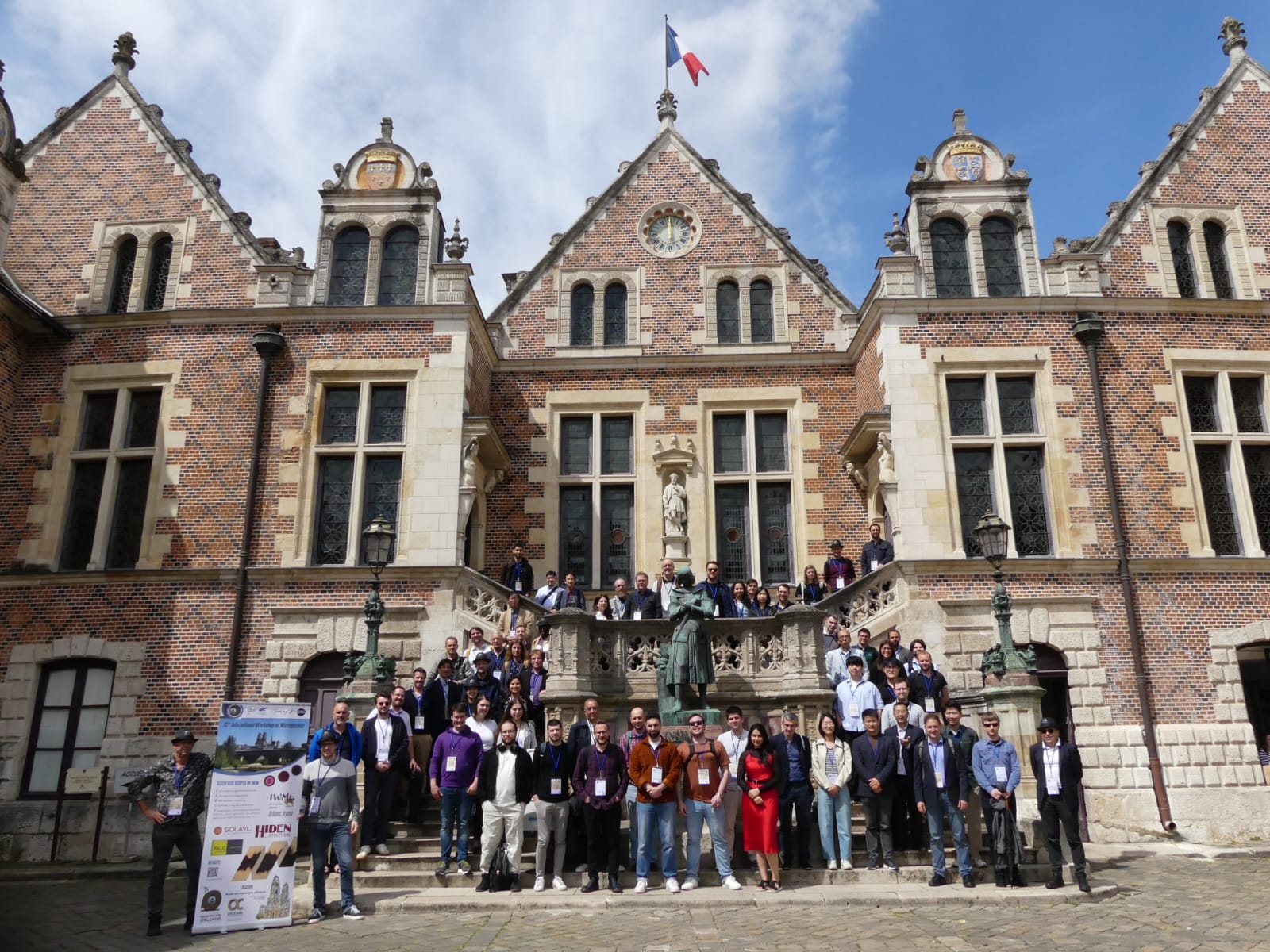 The 12th International Workshop on Microplasmas in 2024 has been held in Orleans, France, from June 3rd to 7th. One Invited, five Contributed talks, and two posters were presented by scientists from Ruhr University Bochum. The conference venue was the Museum Des Beaux-Arts with a nice location and environment in the centre of Orlean. The workshop covered wide topics on the microplasma sources and their generation in the gas phase or liquid dealing with interface behaviour from one side and diagnostics of microplasma sources and their application in material processing, plasma medicine, agriculture, etc. The modeling section provides research on the numerical simulation of streamer dynamics to the 0D Global kinetic model. Very insightful talks and discussions which in the end led to the overall view of microplasma's fundamental aspects and their application.
The 12th International Workshop on Microplasmas in 2024 has been held in Orleans, France, from June 3rd to 7th. One Invited, five Contributed talks, and two posters were presented by scientists from Ruhr University Bochum. The conference venue was the Museum Des Beaux-Arts with a nice location and environment in the centre of Orlean. The workshop covered wide topics on the microplasma sources and their generation in the gas phase or liquid dealing with interface behaviour from one side and diagnostics of microplasma sources and their application in material processing, plasma medicine, agriculture, etc. The modeling section provides research on the numerical simulation of streamer dynamics to the 0D Global kinetic model. Very insightful talks and discussions which in the end led to the overall view of microplasma's fundamental aspects and their application.
- Details
Laboratory stay in the USA
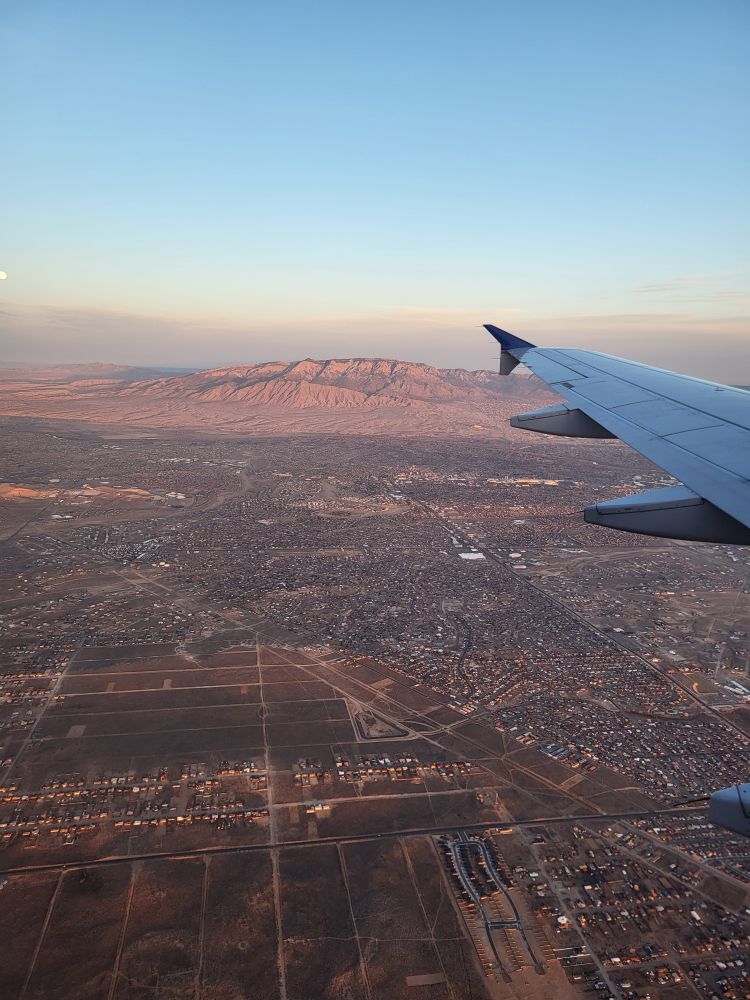 As part of his PhD, PhD student David Steuer (project A6) is spending nine weeks at the Sandia Plasma Research Facility (PRF) in Albuquerque, New Mexico, USA. Researchers can apply at PRF to submit project ideas. After a successful review process, there is then the option of using one of the excellently equipped laboratories or handing over the experiment to the cooperation partner.
As part of his PhD, PhD student David Steuer (project A6) is spending nine weeks at the Sandia Plasma Research Facility (PRF) in Albuquerque, New Mexico, USA. Researchers can apply at PRF to submit project ideas. After a successful review process, there is then the option of using one of the excellently equipped laboratories or handing over the experiment to the cooperation partner.
The PRF also offers simulation capacities. In David's project, atomic oxygen densities are to be measured within a microcavity plasma array. A state-of-the-art picosecond laser system from the PRF can be used for this purpose.
The stay was funded by the Research School of the Ruhr-Universität Bochum (PRINT programme) and the CRC 1316.
- Details
Understanding the theory of particles in plasmas
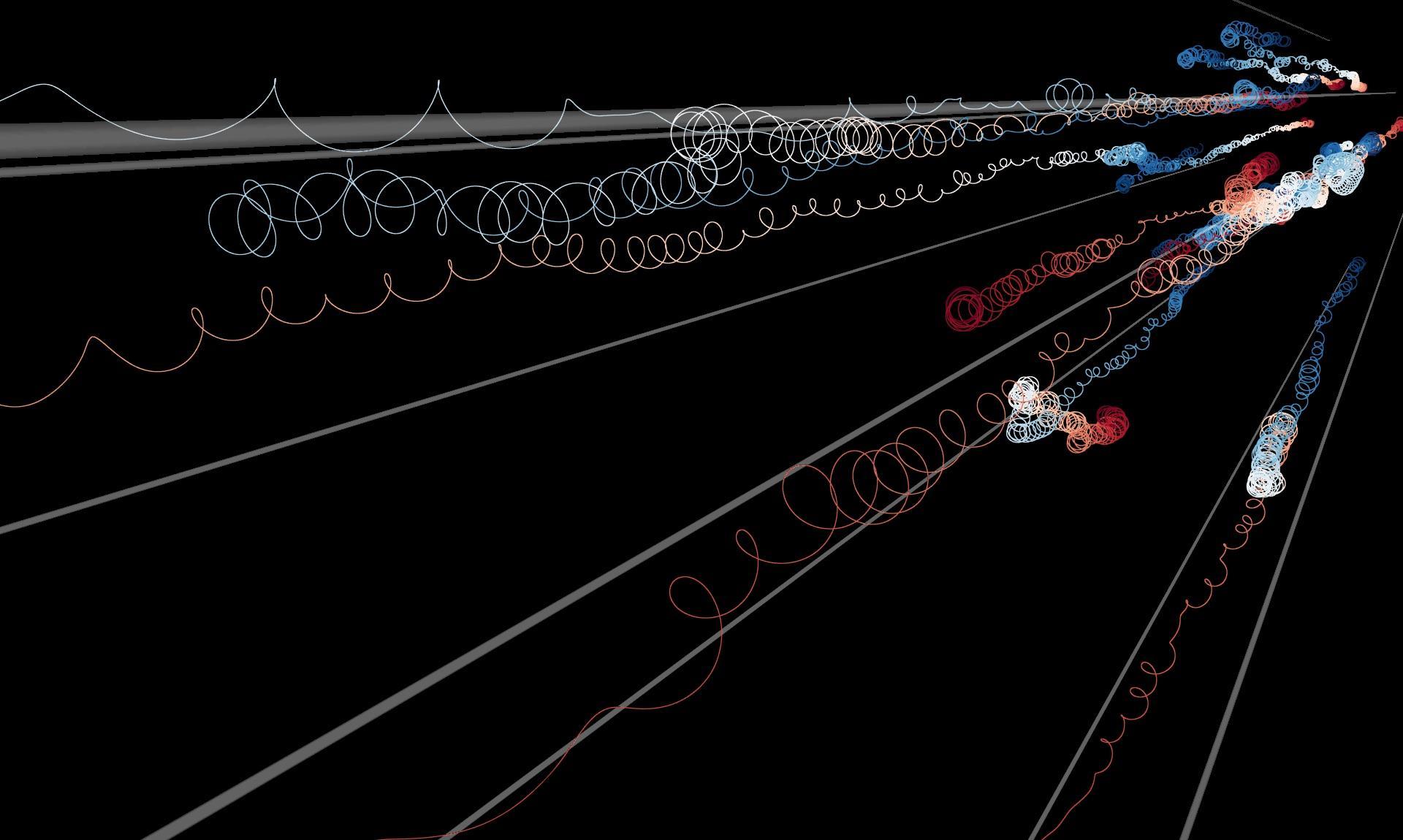 On Monday, January 22nd, scientists meet at RUB for the yearly meeting "Plasma and Particle Theory Day" to discuss the theory of particles in plasmas. Understanding the collective behavior of ionized particles is in the focus of research. A particular challenge is to understand how physical collisions of particles and the interactions between ions and electromagnetic fields are included in the various equations to describe the systems. In astrophysics, often these equations are dominated by the interaction of particles with electromagnetic waves. This is the research focus of the Collaborative Research Center SFB1491, "Cosmic Interacting Matters - From Source to Signal", centered at RUB. The research department of Plasmas with Complex Interactions also hosts SFB1316, "Transient Atmospheric Plasmas: From Plasmas to Liquids to Solids". Here, non equilibrium processes in atmopsheric plasmas for species conversion are the topic of research. Compared to astrophysical plasmas, these atmopsheric plasmas are very dense and physical collisions dominate the equations. It is the goal of the Plasma and Particle Theory day to move toward exploring the region in which both terms play a significant role. This is for instance the case in molecular clouds in the Milky way, in which the degree of ionization is as low as ~30% and naturally, collisions become important in the description. Another example is the physics of lightning that can be tested in the plasma lab and for which a briding theory is needed to understand the physics of atmospheric lightning. Once the particle interactions become inelastic, i.e at high energies or at extreme densities like they exist in neutron stars, the classical description needs to be replaced by the quantum mechanical one. Scientists therefore discuss the different methods, how synergies can be build and what the next steps are to build a consistent framework to combine classical and quantum-mechanical interactions.
On Monday, January 22nd, scientists meet at RUB for the yearly meeting "Plasma and Particle Theory Day" to discuss the theory of particles in plasmas. Understanding the collective behavior of ionized particles is in the focus of research. A particular challenge is to understand how physical collisions of particles and the interactions between ions and electromagnetic fields are included in the various equations to describe the systems. In astrophysics, often these equations are dominated by the interaction of particles with electromagnetic waves. This is the research focus of the Collaborative Research Center SFB1491, "Cosmic Interacting Matters - From Source to Signal", centered at RUB. The research department of Plasmas with Complex Interactions also hosts SFB1316, "Transient Atmospheric Plasmas: From Plasmas to Liquids to Solids". Here, non equilibrium processes in atmopsheric plasmas for species conversion are the topic of research. Compared to astrophysical plasmas, these atmopsheric plasmas are very dense and physical collisions dominate the equations. It is the goal of the Plasma and Particle Theory day to move toward exploring the region in which both terms play a significant role. This is for instance the case in molecular clouds in the Milky way, in which the degree of ionization is as low as ~30% and naturally, collisions become important in the description. Another example is the physics of lightning that can be tested in the plasma lab and for which a briding theory is needed to understand the physics of atmospheric lightning. Once the particle interactions become inelastic, i.e at high energies or at extreme densities like they exist in neutron stars, the classical description needs to be replaced by the quantum mechanical one. Scientists therefore discuss the different methods, how synergies can be build and what the next steps are to build a consistent framework to combine classical and quantum-mechanical interactions.
Figure: Lukas Merten, TP4, RUB
